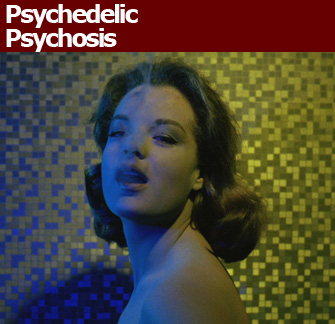
One day, Serge Bromberg, an indefatigable restorer and archivist of historic French films, had the good fortune toOne day, Serge Bromberg, an indefatigable restorer and archivist of historic French films, had the good fortune to find himself stuck in an elevator with Inès Clouzot, widow of the renowned filmmaker Henri-Georges Clouzot (1907-77), who directed the French film classics Le Corbeau (1943), Quai des Orfèvres (1947) and Le Salaire de la Peur (1953). During the time they spent in the elevator, Bromberg managed to elicit her permission to make a documentary about L’Enfer (Inferno), Clouzot’s extraordinary unfinished 1964 cinematic project about a man’s pathological jealousy of his younger wife Odette (Romy Schneider). After several chaotic months in production, the movie was eventually abandoned when Clouzot suffered a heart attack.
Drawing on hundreds of hours of rushes from the original movie and interviews with various crew members and other participants in the project, Bromberg and his co-director Ruxandra Medrea have made L’Enfer d’Henri-Georges Clouzot, a fascinating account of the obsession that drove Clouzot to create a film that may well have turned into a masterpiece but instead ended up a catastrophic failure. It may not quite be in the realm of Lost in La Mancha, the documentary charting the chaos of Terry Gilliam’s attempts to film Don Quixote, but it is not far off.
Granted carte blanche by Columbia Pictures to spend as much as he wanted on the project, Clouzot installed himself in the luxurious George V hotel in Paris before moving three months later to the Cantal region, at the foot of the Garabit viaduct, where he compulsively shot and reshot scenes. The documentary, which demonstrates why many people saw this as potentially Clouzot’s most original work, follows his experiments with different techniques, most notably psychedelic images and electro-acoustic music, as he depicts Marcel’s growing insanity. The “real-life” scenes were filmed in black and white and Marcel’s fantasies in color. Although most of the clips are without sound, two modern actors, Jacques Gamblin and Bérénice Bejo, fill in the gaps by performing scenes from the original screenplay, written by Clouzot, who was also the film’s producer, which may explain why he had such a hard time bringing production to an end – no one was standing over his shoulder with a budget.
Romy Schneider is hypnotically beautiful as she patiently poses for innumerable tests of different visual effects. And it is extraordinary how many erotic boundaries are crossed in the film: I had no idea that the naked body could be quite so blatantly depicted in 1964, before the sexual revolution of 1968.
Three separate film crews were at the beck and call of the famously insomniac director, who thought nothing of calling his team in the middle of the night or cajoling them into working on Sunday. In one amusing anecdote recounted in the documentary, an exhausted technician escaped through a washroom window in order to avoid Clouzot’s demands. But it wasn’t just the crew members who were wilting at the constant demands placed upon them; the actors themselves were under increasing pressure from the never-satisfied Clouzot. Given the takes and retakes in which we see Serge Reggiani, who played the husband, Marcel, being forced to sprint long distances, it comes as no surprise that he abandoned the project before it was finished, claiming to be ill. Clouzot pressed on, searching for a replacement and preparing to reshoot all the scenes featuring the husband, even though the artificial lake that plays such an important role in his film was scheduled to be drained in a short time.
Perhaps out of deference to Clouzot’s widow, the documentary directors never fully analyze Clouzot’s own neuroses as he portrays the mental disintegration of the jealous Marcel, but this riveting movie is still essential viewing for cinema students and movie lovers alike.
Note: to find out more about the making of the film, read Romy dans L’Enfer (Albin Michel/Lobster, 160 p., €25).
Favorite